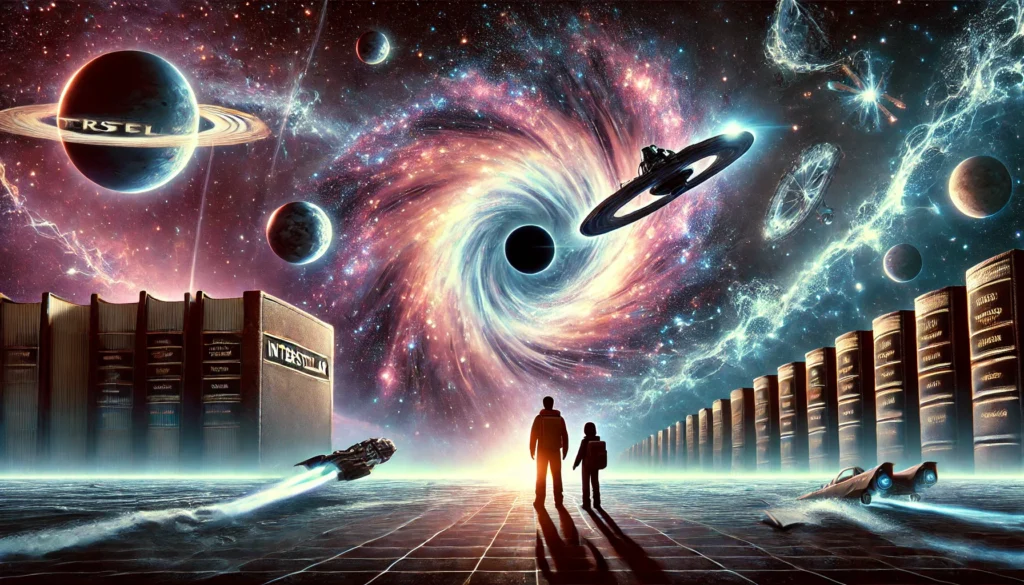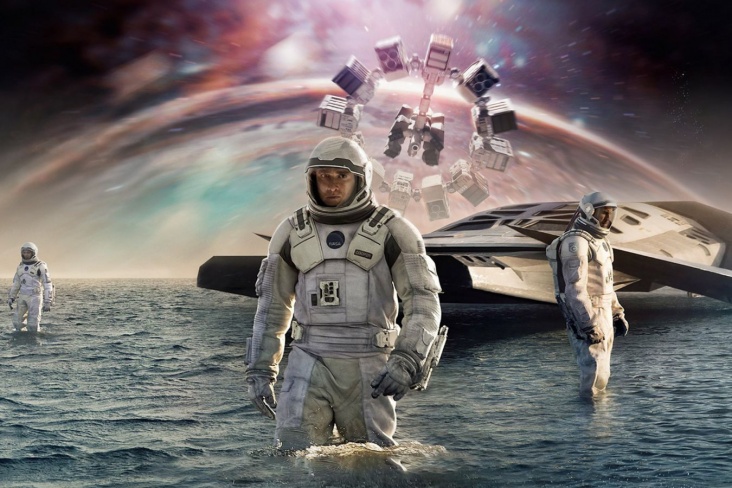Christopher Nolan’s Interstellar is not merely an adventure set in the vast expanse of space. It is a scientific and emotional odyssey, skillfully exploring themes like the elasticity of time, the mysteries of black holes, and the enduring hope for humanity. This epic narrative intertwines science and love, transporting the audience to a different universe while prompting questions about humanity’s core instincts. What leaves the most profound impact in this masterpiece, where time bends, and love is presented as a universal force?
Can Love Transcend Time and Space?
Interstellar holds a special place in cinema as one of the films that provides the clearest answer to this question. Directed by Christopher Nolan, the film delivers not just a science fiction story but a deeply emotional experience. As we delve into the depths of space, we follow the events surrounding Cooper and Murphy, a father and daughter whose bond forms the emotional heart of the narrative.
Opening Scenes and a Dystopian World
The movie begins with a dream sequence of Cooper, recalling his days as a pilot. His daughter Murphy interrupts, saying, “I dreamed about you.” This line becomes significant as the story unfolds. Although Cooper was once a pilot, he now works as a farmer due to the Earth’s dire state of famine and environmental degradation. The planet is no longer a habitable place, with humanity battling dust storms and resource shortages.
The tension between science and skepticism is showcased early in the story through Cooper’s conversation with his son’s teacher. The teacher argues that the world needs farmers, not engineers, criticizing science and space exploration as unnecessary pursuits. Cooper vehemently disagrees, setting the stage for the film’s central conflict between scientific ambition and human emotion.
NASA’s Secret Mission
Gravitational anomalies in Cooper and Murphy’s home lead them to a series of clues, ultimately directing them to NASA’s secret facility. Here, they learn about NASA’s efforts to find habitable planets for humanity. Professor Brand informs Cooper that Earth’s oxygen levels are depleting, and humanity has limited time left. These missions are aptly named “Lazarus Missions,” referencing the biblical figure who rose from the dead. Similarly, these missions aim to revive humanity’s prospects for survival.
Cooper is asked to pilot one such mission. When he questions, “What would you have done if I hadn’t come here?” Professor Brand enigmatically replies, “They chose you,” hinting at a mysterious selection process that remains ambiguous throughout the film.
Plan A and Plan B: Humanity’s Last Hope
Plan A involves solving Earth’s gravitational equation to enable humanity to relocate to another planet. However, Professor Brand secretly struggles to resolve the equation. Plan B is a contingency plan: transferring human genetic material to a new planet to establish a future generation. When Cooper realizes Plan A’s potential failure, he grapples with the possibility that the people left on Earth, including his family, may be abandoned.
The Conflict Between Love and Science
“Love is the one thing that transcends time and space,” declares Dr. Brand, emphasizing one of the film’s core philosophical themes. Her assertion that love holds more value than empirical data sparks debate within the crew, showcasing the tension between logic and emotion. This scene encapsulates the film’s broader exploration of these conflicting forces.
The Climax Time as a Tangible Dimension
When Cooper falls into the black hole, he finds himself in a multidimensional construct where time is physically represented. Here, he views Murphy’s childhood bookshelf, realizing he is the “ghost” she had referred to. Through subtle actions, like knocking over books, Cooper tries to send a message: “Stay.” This revelation demonstrates the profound bond between Cooper and Murphy, transcending both time and space.
Ultimately, Murphy deciphers the quantum data Cooper transmits, saving humanity. Cooper’s actions and their emotional resonance make him a hero to his daughter, culminating in a powerful emotional and scientific resolution.
Review and Analysis Does Emotion Surpass Science?
Interstellar is more than a science fiction film; it’s a narrative about deep emotional connections. Feelings and love play pivotal roles, often overriding scientific reasoning. Dr. Brand’s love-driven choice leads to the discovery of the most suitable planet, while Cooper and Murphy’s bond propels the story toward its emotional peak.
The film underscores that logic and emotions can coexist and even complement each other, demonstrating how emotional bonds can drive humanity toward survival and innovation.

Interstellar’s Scientific Dimensions and the Concept of Time
Through cinematic storytelling, Interstellar delves into scientific concepts such as time, gravity, and space exploration. Real-world phenomena like black holes, wormholes, and Einstein’s theory of relativity are integrated into the narrative. Time’s relativity is one of the film’s central themes, vividly depicted in the sequence where the team visits Miller’s planet.
Due to the planet’s proximity to a black hole, time slows significantly; an hour there equates to years on Earth. This poignant scene not only alters the viewer’s perception of time but also deepens Cooper’s longing for his daughter, creating a profound emotional impact.
Black Holes and Wormholes: Bridging Science and Art
One of the film’s standout features is its accurate depiction of black holes and wormholes, achieved through collaboration with physicist Kip Thorne. Gargantua, the black hole in the movie, is both scientifically credible and visually stunning. Its representation of light distortion, time dilation, and the event horizon enriches the film’s narrative and visual appeal.
Tesseract and the Five-Dimensional Representation of Time
When Cooper falls into the black hole, the story takes a philosophical turn, introducing a concept called the Tesseract. In this space, time is represented as a physical dimension, allowing Cooper to interact with past events. This sequence is highly abstract and has sparked much debate among audiences. The visualization of a fifth dimension portrays time as manipulable and interconnected with space.
Through the Tesseract, Cooper sends crucial data to Murphy, enabling her to save humanity. This scene reinforces the idea that love and determination can transcend temporal and spatial limits.
Conclusion and Message: Is There Hope for Humanity?
Interstellar blends scientific inquiry with emotional depth, delivering a message of hope for humanity’s future. The film highlights pressing global issues like resource depletion and climate change while celebrating humanity’s resilience and desire for discovery.
The bond between Cooper and Murphy exemplifies humanity’s intrinsic need to protect loved ones, underscoring the power of emotional connections in driving progress. Their reunion at the end signifies both an emotional high point and an optimistic view of human potential through science and love.
Christopher Nolan’s Interstellar stands out not only as a science fiction masterpiece but also as a profound exploration of philosophical and emotional themes, leaving a lasting impression on audiences.
